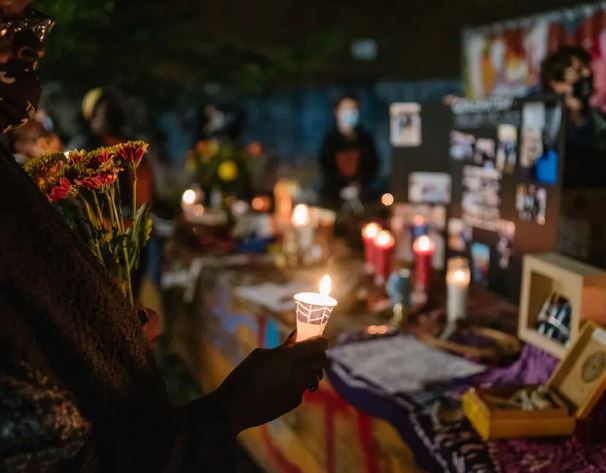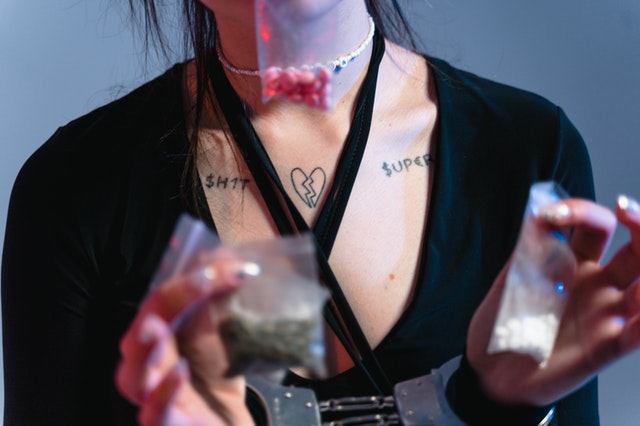Addiction Recovery Bulletin
Opioid addiction has deep, troubling roots in American history. Not merely a plague of recent decades, the phenomenon of widespread opioid addiction dates back to the 19th century, when the Civil War sparked the United States’ first opiate addiction epidemic among ailing veterans. Nineteenth-century opiate addiction cases usually originated in doctors’ prescriptions, a disturbing parallel with today’s ongoing opioid crisis, which has roots in opioid overprescribing during the 1990s. The alarming parallels between the 19th- and 21st-century opioid crises in the United States are not limited to iatrogenesis, however.
Both crises exhibit a history of troubling racial inequalities in access to opioids as well. Addiction was far more common among white Civil War veterans than Black veterans, who lacked equitable access to opiates, a pattern that presaged the opioid underprescribing experienced by Black Americans in recent decades.1 Thus, the history of the Civil War-era opiate addiction epidemic not only reveals the deep historical origins of iatrogenic opioid addiction in the United States, but also underscores how Black Americans have experienced longstanding racial inequalities in access to opioid medicines.
Historical Opioid Use Patterns in the Civil War Era
During the antebellum decades, addiction to rudimentary opiates such as laudanum and opium in gum, pill, and powdered forms was common among white Americans. Discussion of opiate addiction, often dubbed the “opium habit” or “slavery” to opiates, frequently appeared in medical journals, monographs, textbooks, and even newspapers beginning in the 1830s. Psychiatrists, physicians, and other Americans widely attributed opiate addiction to the sufferers’ mental illness, constitutional weakness, or moral failings. Consequently, Americans afflicted by the so-called opium habit were frequently victim-blamed, stigmatized, and even institutionalized.1
In reality, Americans addicted to opiates could usually trace their troubles to medical care. Most opiate addiction in the 19th-century was iatrogenic, stemming from physicians’ prescriptions or medical advice.2 Opiates were standard remedies for hundreds of ailments, including dysentery, cholera, malaria, pneumonia, menstrual pain, painful injuries and wounds, and more. Surveying 30 antebellum American medical textbooks, materia medica commentaries and formularies, medical handbooks, medical dictionaries, and home health guides published between 1813 and 1858, I identified approximately 150 distinct ailments for which opiates were indicated. The figure fluctuates slightly depending on how one classifies certain illnesses, as many nineteenth-century medical diagnoses do not map precisely on to modern diagnoses.1 Contemporary hospital3 and pharmacy records4 indicate that opiates were among the most commonly prescribed medicines of the 19th century. In a pre-germ theory era when typical medical interventions failed to effectively address the microorganisms at the root of many sicknesses, doctors and patients prized opiates as utilitarian remedies that effectively mitigated a legion of symptoms, regardless of cause. Indeed, as one enthusiastic medical student at the University of South Carolina explained, opium was “the ‘Magnum Dei Donum’”—or, the great gift of God—“of the Materia Medica.”5
In the aftermath of the Civil War (1861-1865), the phenomenon of opiate addiction reached epidemic levels for the first time in American history, developing into a major public health crisis with alarming social implications. This epidemic, the earliest opioid crisis in U.S. history, was driven initially by sick and injured Civil War veterans, who became the first distinct cohort in the nation to be widely associated with opiate addiction. The Civil War presented the greatest health disaster of the 19th century, prompting surgeons to rely more heavily than ever on opiates, including newly available hypodermic morphine injections.6 A Confederate medical handbook summed up the medical consensus of the day when it described opium as the most “indispensable drug on the battlefield—important to the surgeon, as gunpowder to the ordinance.”7
Accordingly, military surgeons North and South prescribed opium pills and morphine injections liberally to ease pain stemming from gunshot wounds, amputations, and traumatic nerve injuries. Surgeons also doled out opium and laudanum to treat dysentery and diarrheal sicknesses, the most common health complaints of the war. Many soldiers, taking their cue from army surgeons, continued purchasing and consuming opiates after leaving the military, there being few legal restrictions on narcotics until the early 20th century. The Civil War thus sparked an unprecedented surge in iatrogenic opiate addiction, resulting in tens of thousands of cases of chronic addiction among veterans. Predictably, overdose deaths were frequent among veterans, and the medical literature of the period is littered with cases of men whose lives were upended by addiction.8
Black Civil War Soldiers and Opiate Addiction
Racial disparities were evident among Civil War veterans addicted to opiates, the majority of whom were disproportionately white. Although Black soldiers comprised approximately 10% of the U.S. army during the Civil War, they were not equally represented among the cohort of veterans who were addicted. In a sample of approximately 150 Civil War veterans who experienced opiate addiction in their postwar lives—the largest sample of any study to date, compiled from spotty, extant Civil War-era medical records—I could identify only 1 Black Civil War veteran who suffered from an opium habit.1
Contemporary physicians and psychiatrists likewise noted a distinct racial gap in opiate addiction. In 1885, a physician reported that the Eastern North Carolina Insane Asylum had admitted an exceedingly rare case of “colored insane man” of whom “it was alleged that his insanity was caused from the opium habit.” The man’s case was worthy of note because “this was the only case of opium habit he [the doctor] had ever seen in the negro.”9 The next year, a white Alabama physician also observed that “the opium habit is rare” among the Black population after the Civil War.10This racial gap persisted for decades.
Surveying the records of morphine maintenance clinics that dotted the United States from 1910s to 1920, historian David Courtwright observes that while the southern white population experienced the highest rate of opiate addiction in the nation, few Black southerners appeared in the clinics’ records, although the facilities were ostensibly open to Black patients.11 This enduring racial gap in the opiate addiction rate stemmed largely from racist 19th-century medical beliefs about Black bodies, coupled with substandard medical care provided to Black Civil War troops. Nineteenth-century psychiatry posited that, among other causes, opiate addiction stemmed from mental overstimulation, which led to insanity and substance abuse. Such overstimulation could only occur among intelligent, sensitive white Americans, according to Civil War-era psychiatrists. In contrast, white medical authorities claimed that Black Americans were too “simple-minded” to experience mental overstimulation, precluding them from insanity and opiate addiction.10
According to J.D. Roberts, a North Carolina doctor, Black bodies lacked “the same delicate nervous organization” as whites, and thus “d[id] not demand the form of stimulant conveyed in opium” as did whites. Black people, Roberts claimed, also had a “general ignorance” of medical care, an assertion implying that Black Americans lacked the knowledge to care for their health needs by self-medicating with opiates, as whites often did.9 This constellation of racist beliefs was developed by antebellum white southerners to justify keeping Black people enslaved and to ward off abolitionist critiques.12 After the Civil War, apologists of Jim Crow fine-tuned these beliefs and used them to explain why white Civil War veterans had opiate addiction more often than Black veterans.
In reality, the relative infrequency of opiate addiction among Black Civil War veterans and other African Americans during the late 19th century stemmed from structural racism in medicine and health care. Undertreatment for pain and subpar medical care in the military left Black veterans far less likely to become addicted to opiates than their white counterparts. Just as white doctors believed that Black Americans were less liable to mental overstimulation than whites, so too did these physicians believe that Black bodies were less sensitive to pain.13 Consequently, Black Americans were much less likely to be prescribed opiate painkillers during the Civil War.
Prescription records from the war are exceptionally rare, and none are extant for Black regiments. But anecdotal evidence suggests that army surgeons, who were overwhelmingly white, often refrained from prescribing opiates to wounded Black soldiers because they believed that Black men were not troubled by pain. One white surgeon assigned to a Black regiment refused to give painkillers to a soldier whose foot was partly severed by shrapnel. Under such circumstances the standard of care for white soldiers was morphine, given early and often. But when confronted, the surgeon claimed that the wounded man in question “was not suffering much pain,” despite the gruesome nature of the wound.14 The surgeon in this episode—and likely countless similar, unrecorded incidents—seems to have been motivated by the mainstream contemporary medical belief that Black men were impervious to painful injuries that would have debilitated white soldiers and warranted opiates.
Doctors also seem to have avoided giving opiates to Black soldiers debilitated by diarrhea, although surgeons usually administered opiates to white soldiers afflicted by the same illnesses. Surgeons knew that well-timed, liberal administration of opiates could, and often did, stave off soldiers’ deaths by dehydration, the risk of poisoning or addiction notwithstanding. Consequently, the mortality rate for diarrheal sicknesses among white troops—for whom surgeons prescribed opiates liberally—was a relatively low 17.3%. In contrast, the mortality among Black troops was 33.9%, nearly double that of white soldiers.15 This excessive mortality suggests that Black soldiers did not have access to prescription opiates, the standard of care for diarrheal ailments.
Black soldiers’ lack of access to opiate analgesics and antidiarrheals was typical, not exceptional, when considered within the broader scheme of Civil War medicine. Indeed, scholars have documented pervasive racism in Civil War military and humanitarian medicine, which diminished the quality of medical care accessible by Black Americans and resulted in thousands of avoidable Black deaths during the Civil War and its aftermath.16
The post Race and Opioids: Lessons From the Civil War-Era Opioid Addiction Crisis appeared first on Psychiatrictimes.co.









